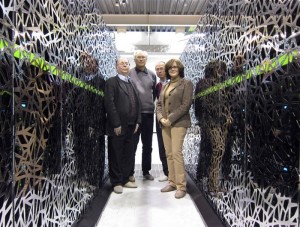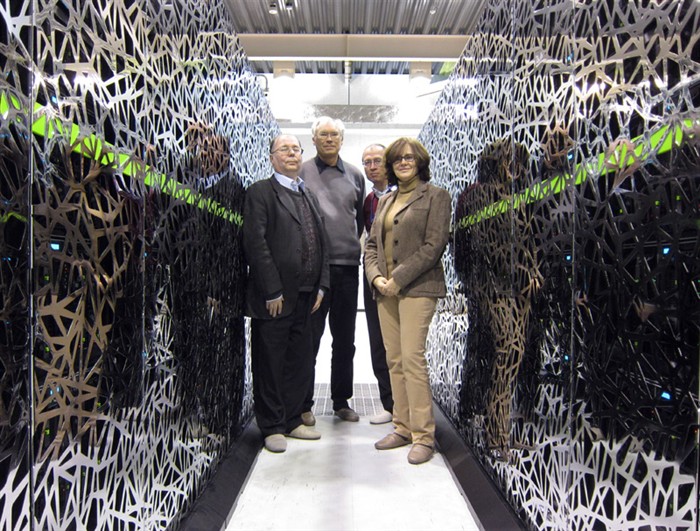
CEA-F4E CSC team standing between a section of the “Helios” supercomputer: from left to right, Jacques David, François Robin, Jacques Noé (CEA) and Susana Clement Lorenzo (F4E).
French supercomputer vendor Bull has announced that the French Alternative Energies and Atomic Energy Commission (CEA) is expanding the power of the Helios supercomputer in Japan by equipping it with additional bullx nodes featuring Intel Xeon Phi coprocessors.
Helios supports research work aimed at controlling nuclear fusion with modeling and simulation capacity that is open to all European and Japanese researchers under the “Broader Approach” efforts of the International Thermonuclear Experimental Reactor (ITER) program.
Computer simulation plays an essential role in the development of research into Nuclear Fusion – both in terms of understanding the extremely complex physical phenomena involved and in scoping future tokamaks,” said Gabriele Fioni, Director of Materials Sciences at the CEA. “The Nuclear Fusion community already has very advanced parallel simulation software. Adapting these for processors with an extremely high levels of parallelization is essential to guarantee their ability to fully utilize future generations of supercomputers, and the integration of Intel Xeon Phi coprocessors into Helios is an important move in this direction.”
The architecture of the Helios supercomputer initially featured 4,410 bullx B510 compute nodes, with 8,820 Intel Xeon E5 processors producing a power of 1.5 Petaflops. The 180 new bullx B515 compute nodes will each include two Intel Xeon Phi coprocessors delivering an additional 400 Teraflops, taking the total power of the Helios system to almost 2 Petaflops.
Read the Full Story.
Sign up for our insideHPC Newsletter.




